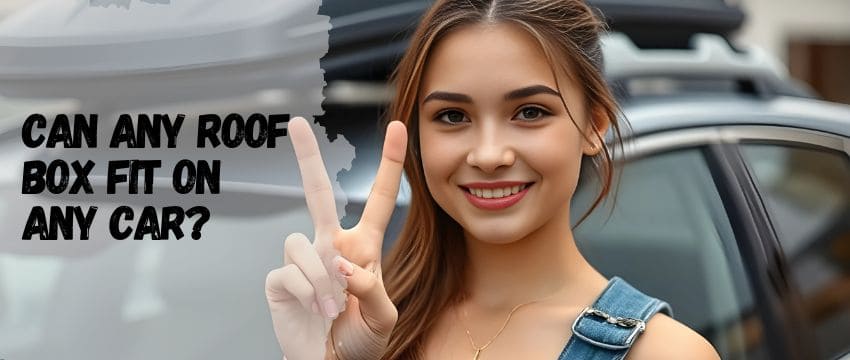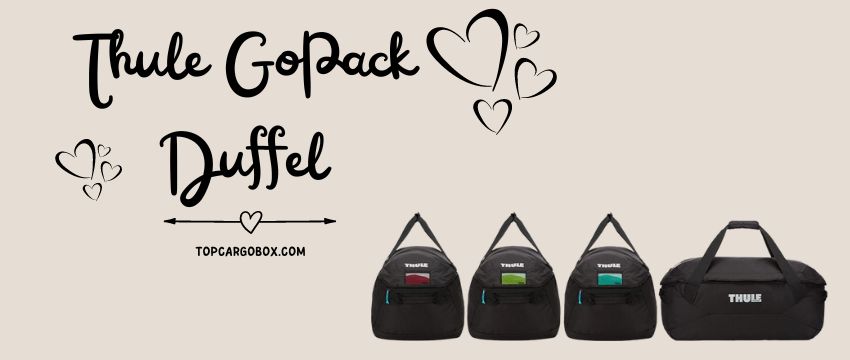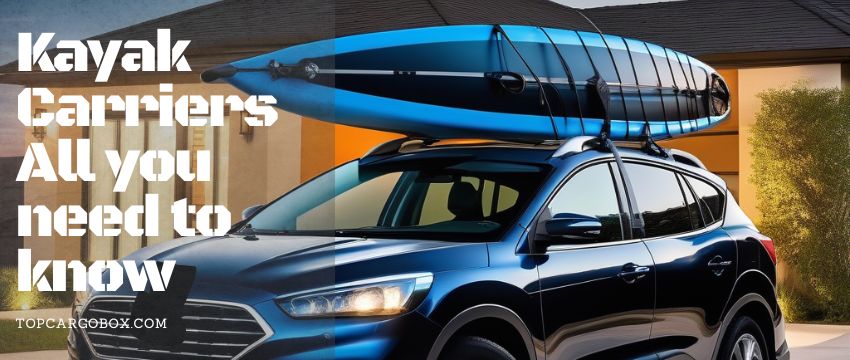Can Any Roof Box Fit on Any Car? Debunking the Myth of Universal Compatibility
The idea of a “one-size-fits-all” roof box is as tempting as it is misleading. Imagine buying a pair of shoes labeled “universal” only to find they pinch your toes or slip off mid-stride. Similarly, assuming any roof box can seamlessly attach to any car is a recipe for frustration, safety risks, and wasted money. While roof boxes are designed to accommodate a range of vehicles, compatibility hinges on a delicate balance of engineering, vehicle specifications, and practical usage. This guide dives deep into why universal fit is a myth, how to navigate compatibility challenges, and what factors ensure a perfect match between your car and your cargo carrier.
1. The Anatomy of Roof Box Compatibility: Why Vehicles Aren’t Interchangeable
At first glance, roof boxes seem simple—a hollow shell to store gear. But their attachment systems, weight limits, and dimensions are finely tuned to specific vehicles.
- Roof Types and Rack Requirements:
Cars come with different roof configurations: - Bare Roofs: No rails or crossbars (common in sedans like Honda Civics). These require aftermarket crossbars and mounting kits.
- Factory Rails: Fixed side rails (e.g., Subaru Outbacks) that need crossbars to span the roof’s width.
- Flush Rails: Integrated, aerodynamic rails (e.g., Tesla Model Y) that may need specialized adapters.
- Naked Roofs: No pre-installed points, demanding clamp-on systems (e.g., Thule Evo Clamp). A roof box designed for factory rails won’t secure to a bare roof without crossbars. For example, the Thule Motion XT requires crossbars rated for its weight, which a compact car’s naked roof might not support.
- Weight Capacity:
Every vehicle has a maximum roof load limit, typically 100–165 lbs (including the box and cargo). Exceeding this stresses the roof’s structure and risks accidents. A Toyota RAV4 (150-lb limit) paired with a 40-lb Yakima SkyBox 16 leaves 110 lbs for gear—enough for camping equipment but insufficient for heavy tools. - Vehicle Shape and Size:
A roof box that fits a Volvo XC90’s long roof might overhang a Hyundai Elantra’s shorter frame, blocking the trunk or rear visibility. Similarly, curved roofs (e.g., Audi A7) demand boxes with flexible mounting systems to avoid gaps.
2. The Role of Crossbars: The Unsung Heroes of Roof Box Fitment
Crossbars are the critical link between your car and roof box. Not all crossbars are created equal, and their design dictates which boxes they can support.

- Crossbar Types:
- Round Bars: Classic, durable, and compatible with U-bolt clamps (e.g., Thule SquareBar). Ideal for heavy loads but noisy.
- Aero Bars: Streamlined for reduced wind noise and drag (e.g., Yakima JetStream). Require clamp-on or T-slot adapters.
- Factory Crossbars: OEM bars (e.g., Subaru Aero Crossbars) tailored to specific models but often limited in adjustability.
- Weight Ratings:
Crossbars have their own load limits, separate from the car’s roof capacity. For instance, Rhino-Rack Vortex bars hold 165 lbs, while factory Honda CR-V bars max out at 130 lbs. Pairing a 30-lb roof box with 100 lbs of gear on weak crossbars risks collapse. - Spacing and Positioning:
Crossbars must be spaced wide enough to distribute weight evenly. A roof box’s mounting points should align with the bars—too narrow, and the box wobbles; too wide, and it won’t latch. The Thule Force XT requires at least 24 inches between bars, incompatible with cars like the Mini Cooper, which have narrower factory rails.
3. Roof Box Designs: How Shape and Size Dictate Fit
Roof boxes aren’t interchangeable Lego blocks. Their dimensions and mounting systems vary widely, impacting which cars they suit.
- Length and Overhang:
- Short Boxes (12–16 cubic feet): Fit compact cars (e.g., Toyota Corolla) without blocking sunroofs or antennas. The SportRack Vista (14 cu ft) suits hatchbacks but may overwhelm subcompacts.
- Long Boxes (17–22 cubic feet): Ideal for SUVs and wagons (e.g., Volvo V90). The Thule Pulse Alpine (21 cu ft) on a Ford Explorer leaves minimal overhang but would extend beyond a Mazda CX-5’s rear bumper, violating legal limits.
- Width and Roof Curvature:
Cars with pronounced roof curves (e.g., Porsche Taycan) need boxes with adjustable mounting feet to prevent gaps. The Yakima SkyBox Carbonite uses pivoting feet to hug curved roofs, while rigid boxes (e.g., Inno Shadow 16) suit flatter profiles. - Height and Garage Clearance:
Tall boxes (e.g., Thule Motion XT XXL) add 15–18 inches of height. A Jeep Wrangler with a roof box might exceed standard garage door heights (7 feet), leading to collisions. Always measure total vehicle height with the box installed.
4. Mounting Systems: The Make-or-Break Factor
Even if a roof box fits dimensionally, its mounting mechanism must align with your crossbars.
- U-Bolt Systems:
Common on round bars, these clamp around the bar with a U-shaped bolt. They’re secure but time-consuming to install. Example: Thule Canyon. - T-Slot Channels:
Found on aero bars, these allow tool-free sliding and locking. The Yakima SkyBox uses T-slot adapters for quick adjustments. - Clamp-On Systems:
Versatile for factory rails, these grip the crossbar from above. The Rhino-Rack Backbone uses a dual-clamp design for SUVs like Land Rovers. - Vehicle-Specific Kits:
Some cars (e.g., Tesla Cybertruck) need custom adapters. The Tesla Roof Rack requires proprietary mounts incompatible with generic boxes.
5. Legal and Safety Limits: The Overlooked Dealbreakers
Ignoring regulations can lead to fines, accidents, or voided insurance.

- Overhang Laws:
Most U.S. states limit rear overhang to 4 feet. A roof box extending 5 feet beyond a Honda Civic’s bumper requires a red flag and permit. - Weight Distribution:
Poorly distributed loads cause sway, especially on highways. Heavier items (e.g., toolboxes) should sit centered over the axles. - Height Restrictions:
Roof boxes that push total vehicle height beyond 13.5 feet violate federal bridge clearance laws. A lifted truck with a tall box might hit low overpasses. - Insurance Implications:
Modifications not approved by the insurer (e.g., using non-OEM crossbars) can void coverage in an accident.
6. Case Studies: Real-World Fitment Wins and Fails
- Success: A family with a Toyota Highlander paired a Thule Motion XT Large (18 cu ft) with Thule WingBar Evo crossbars. The box’s 52-inch length fit the SUV’s 68-inch roof, leaving 6 inches of clearance at the rear.
- Failure: A Jeep Cherokee owner installed a Yakima SkyBox 21 on factory crossbars rated for 120 lbs. The box (35 lbs) plus 100 lbs of gear exceeded the limit, causing crossbar brackets to crack during a road trip.
7. How to Ensure Compatibility: A Step-by-Step Checklist
- Check Vehicle Manual: Note roof load limits and compatible rack systems.
- Measure Roof Dimensions: Length, width, and crossbar spacing.
- Select Crossbars: Match bar type (round/aero) to the roof box’s mounting system.
- Verify Weight Ratings: Box + gear ≤ car’s roof capacity.
- Test Fit: Temporarily mount the box to check overhang and clearance.
Conclusion: Compatibility Is King
No roof box fits all cars, but understanding your vehicle’s specs and the box’s requirements ensures a safe, functional match. Prioritize weight limits, crossbar compatibility, and legal guidelines over marketing claims of “universal fit.” With research and careful planning, your roof box will become a trusted travel companion—not a roadside liability.
Equip wisely, travel safely, and let your adventures begin clutter-free.
Our team is creating outdoor-gear relevant articles with passion. If our articles can help you to find the correct solutions for your questions, we will be happy about that. In the content creation process, we usually collect accurate and useful information online or offline to compile our content in an organized way. Consequently, we can guarantee that you can discover some expected answers to your questions. We appreciate your time on our site.







